We thought it was clear. Makke – di – roti and Sarson-ka-saag belonged to Punjabis.
But this was a misconception as we recently realised during our visit to the Corn Festival, Chhindwara, Madhya Pradesh. We have already travelled to Gwalior and Khajuraho and the cuisine there was close to Delhi food. But this part of the state, namely Chhindwara, was high on its Makke ki Roti or corn bread. We were trying to cover all the things to do at the Corn Festival. In that process, we came across a traditionally done up mud walled – thatched roof pop-up with Patalkot ki Rasoi written in large letters. The stall was drawing visitors in hordes and we too went to see what all the excitement was about.
Pawan Srivastav, the brain behind this stall, greeted us. He hailed from Patalkot, a tribal region tucked inside Tamia Forest beside Chhindwara, about 125 km from Nagpur. Patalkot was populated by a host of tribes mainly Gond and Bharia. Till recent times, these tribes were disconnected from urban life and maintained their cultural exclusivity. Of late, there were roads and mobile phones here and they are now open to tourism as well. To draw attention to this region, Pawan and his team from Patalkot had set up this stall where they were selling freshly cooked food in Bharia cooking style.
We were a larger team this trip – about 9 people and they set up a table for us in no time. The Bharia ladies, resplendent in their old silver ornaments and beautifully woven cotton saris, but head covered with net caps in view of hygiene, soon got busy. In no time we had huge platters or Thalis laid in front of us.
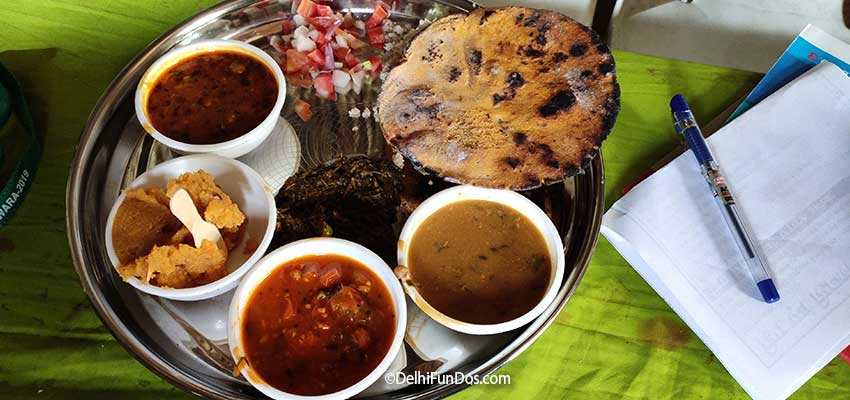
The dishes on the platter looked familiar yet different. Pawan introduced us to the cuisine. It was all organic produce from the land and the theme was corn. Chhindwara is the biggest corn-producing area in India, and hence home to the Corn Festival. Corn therefore featured from the beginning to the end of the meal. The staple was cornbread or Makke – ki – roti. We will come to the end later. Along with the bread, we had the green Chaane-ka-Saag, or a dry dish made of chickpea and mustard leaves. The other cereal on the platter was Kutki Chawal or local millet rice. These were small pinkish grains and screamed health. We had the rice with Bhejda Tamatar Chutney, a tangy tomato relish made in Bharia style. Wish the recipe was available somewhere on the internet.
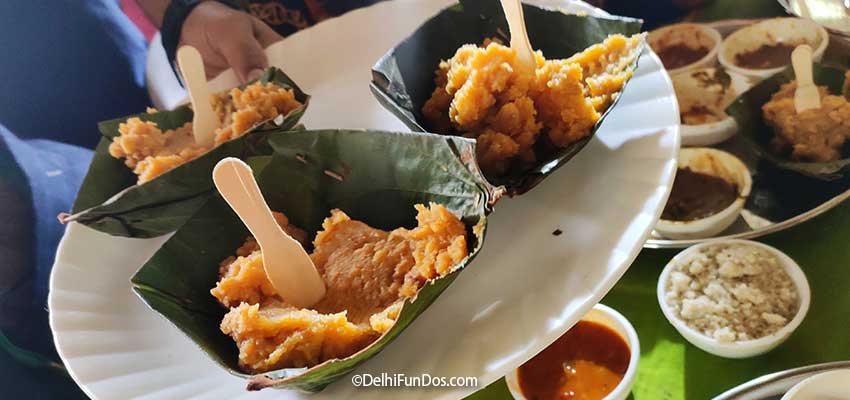
Corn appeared again at the end during dessert – in halwa form! The dish was dry and very moderate in sweetness with a hint of ghee or clarified butter. But the flavour was not overpowering and the starch from corn lent the dish a certain cohesive texture that we do not find in other halwas. We could not help it and shamelessly went for a second serving of this.
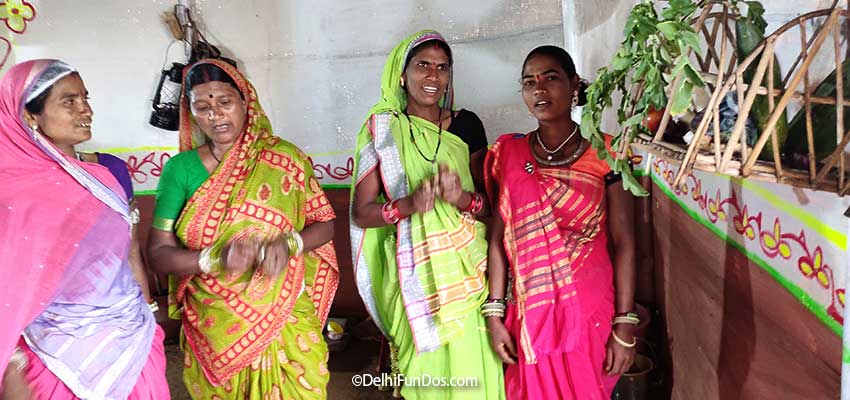
Every dish was supremely tasty. Mild spice, subtle tastes, and flavours were so soothing that this was typically soul food material. We should explain how this meal was all about corn.
Some dishes were made of corn. The other dishes were crops and vegetation that was grown rotationally between corn harvest so as to maintain the fertility of the soil. Kudos to our centuries of traditional knowledge that covered all basic aspects including science and geography. The crop rotation process not only replenished soil nutrients leading to better yield, but also brought variety to the meals and palettes.
Incidentally, our most happening meal here was accompanied by melodious singing by the Bharia women and then we just stopped and started shooting. It was enjoyment at a different level, an experience completely new for us city folks. We have included some of the music in our video here. There was also a local Ayurveda practitioner among them with all sorts of roots and herbs that had healing properties.
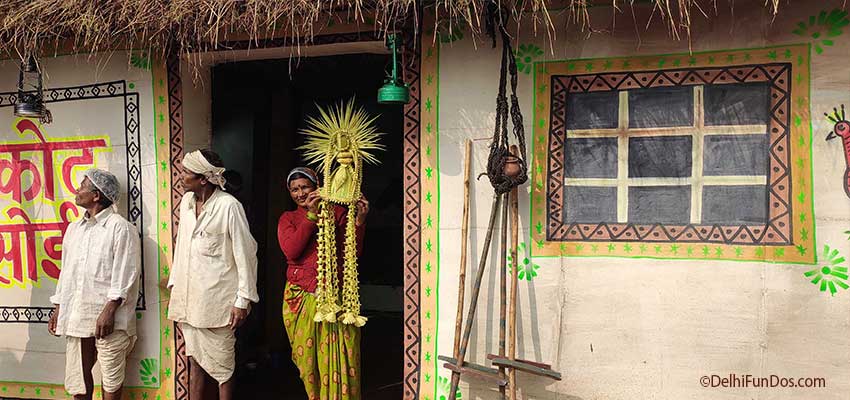
They also displayed elaborate crowns made with Chhind or wild date palm leaves. These headgear were dexterously woven with beautiful designs and were used as marriage crowns for the groom and bride.
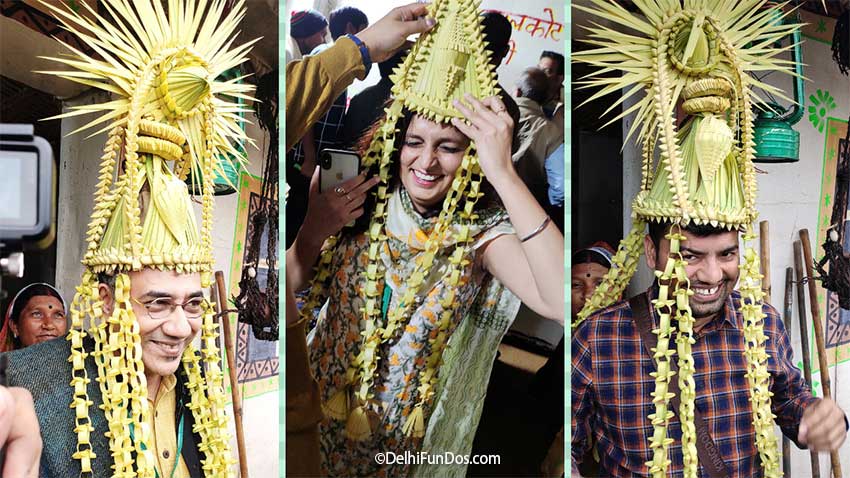
It was fun trying these hats and getting clicked. Incidentally Chhindwara, at some point in, time, was densely covered with Chhind or date palm trees and hence got its name.
Bringing Patalkot cuisine to Chhindwara was a smart step by Pawan and his team to divert tourism to Patalkot. After all, the way to a person’s heart is through his stomach they say. In fact, we believe travelling is way more than doing the local sites or treks. For us, it is a holistic experience that involves local cuisine, music, art, and culture and the surprises all that offer. India is a treasure trove in this respect where there is so much to do, what with culture and traditions and even language changing every few kilometers. Oftentimes, we have seen our thoughts and views resonate in vary unexpected locations. So, in our view, there is a common thread that binds all of us and we just need to be able to catch the connect. Perhaps to advance this connect, Pawan and his team have arranged for home visits with local communities of Patalkot and one can spend a day with a family there. We intend to do a home visit at Patalkot as soon as we can, just to have the food again.
Till then, we are trying to introduce the Makke-ka-Halwa as the go-to dessert at home this winter.
Also, watch on our YouTube Channel:

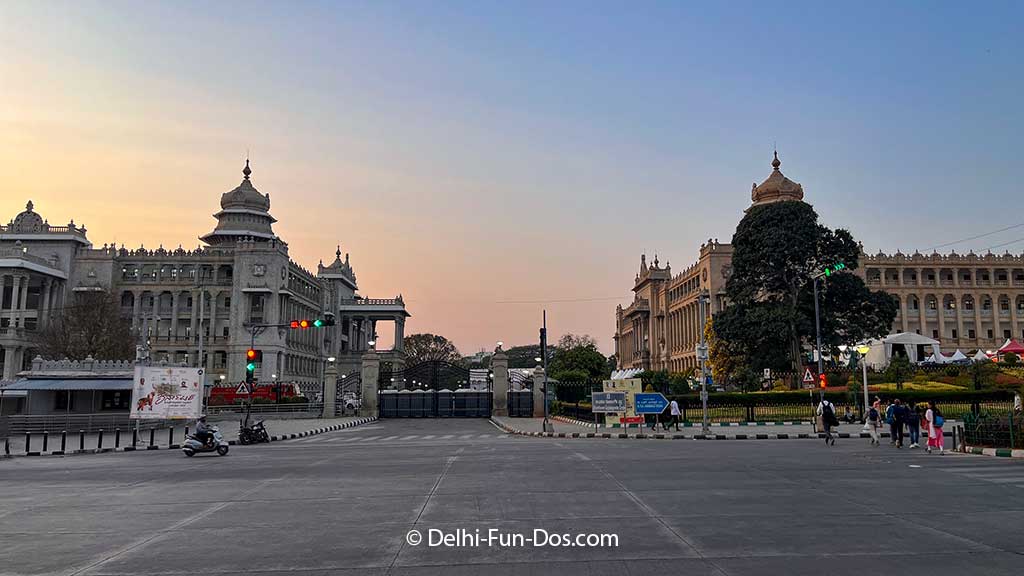
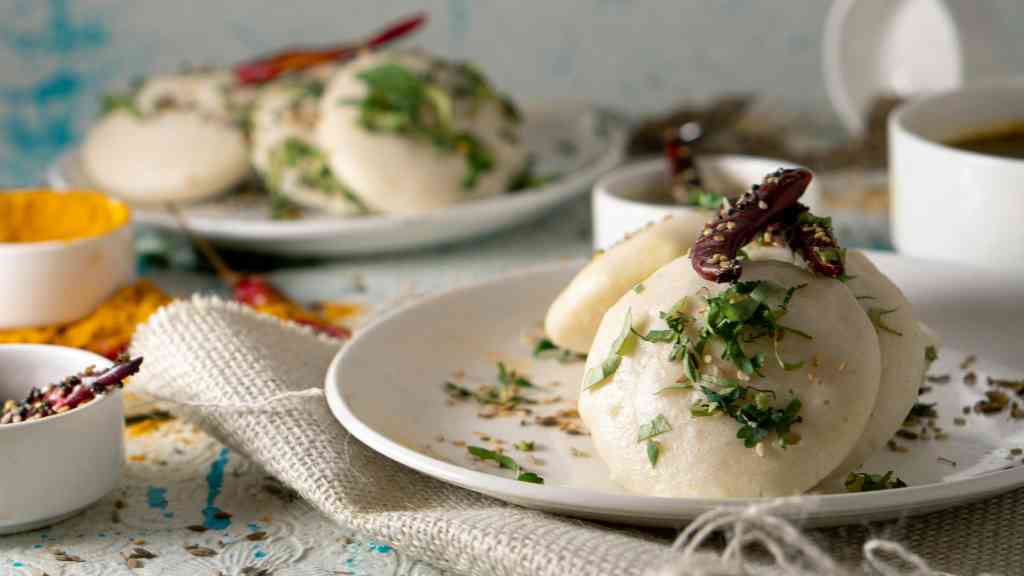
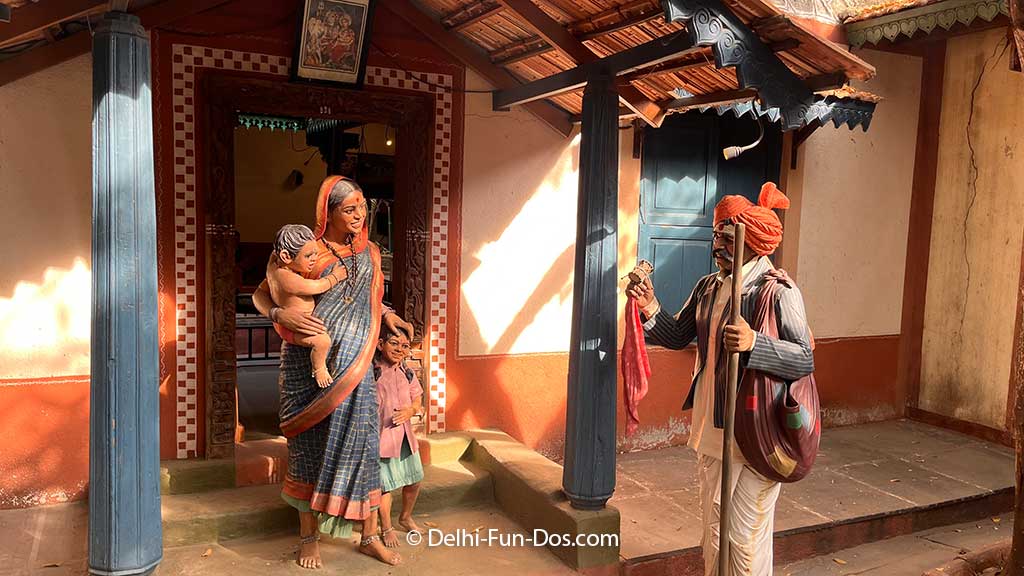
This is an interesting part of Indian cuisine and culture I have yet to explore! We have an Indian community that makes up part of Singapore, but mostly Tamil. Corn Festival sounds interesting!
We love the Indian restaurants at Clark Quay!
This is so neat, I have never been to delhi but looks amazing. The love spicy food!!!
I would love to try this. Everywhere I go i love to try their cuisine and drinks. That is what makes traveling more exciting to try something new.
Tasting local cuisine and culture is integral to our travels too.
Ok. So now I’m salivating. I thought makke di roti was Punjabi cuisine too.
It was totally drool worthy.
Looks like there was plenty to do in Delhi. Thank you for sharing your experience.
Corn festival sounds very fun..! I love corn so much, and the foods you’ve shared sounds so great..!
What an experience! All the food sounds so delicious and savory!
The Nun looks absolutely awesome.
Hope you loved the taste.
What a fun experience of food and culture! I’m really curious of how those food taste like.
This sounds like such an amazing experience for you. I love learning about new foods and cultures.
It was amazing indeed.
I love corn and would love to go for this corn festival some day. I’m not sure if it’s there in Bangalore as yet. Not heard of it.